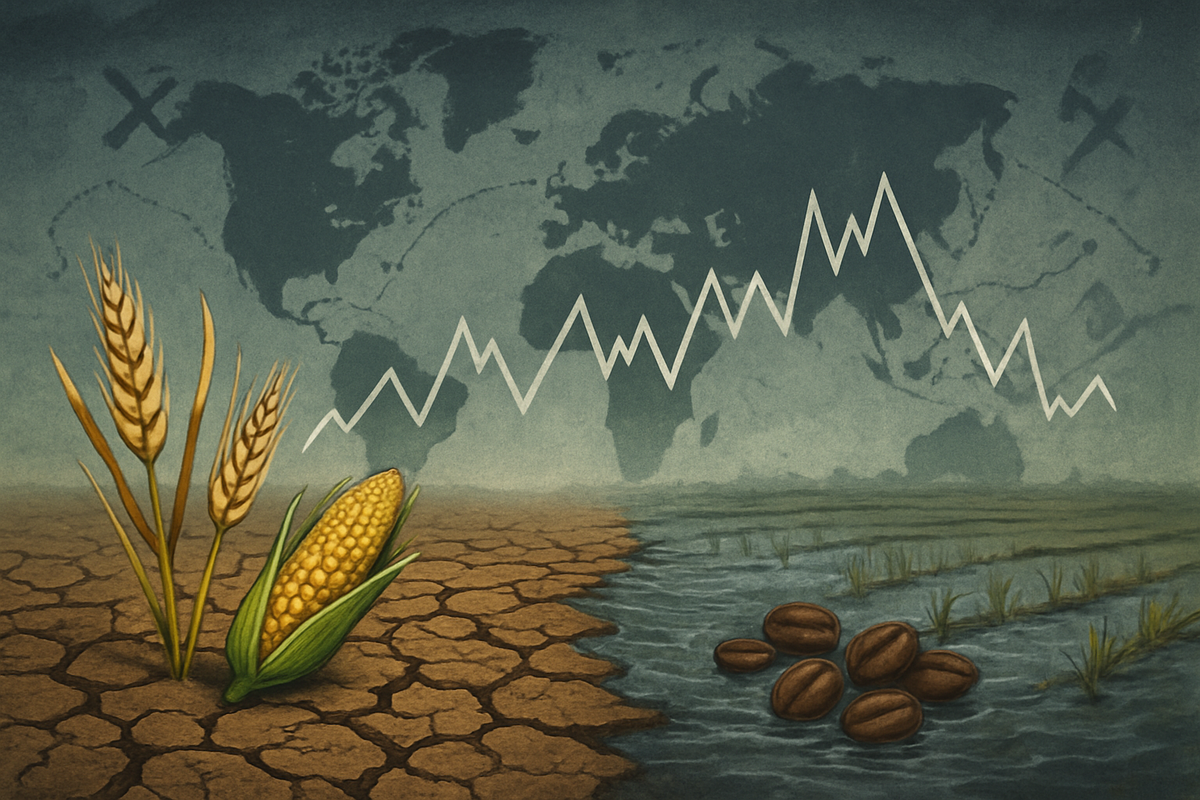SNAP Benefits Update: Millions To Be Removed From Program – Newsweek

Analysis of U.S. SNAP Revisions and Their Impact on Sustainable Development Goals
Introduction and Legislative Context
Recent federal legislative changes, enacted through the One Big Beautiful Bill Act (OBBBA), have mandated significant revisions to the Supplemental Nutrition Assistance Program (SNAP). The Department of Agriculture (USDA) has directed states to implement these changes, which are expected to impact a substantial portion of the 42 million Americans who rely on the program for food security. This report analyzes these revisions through the lens of the United Nations Sustainable Development Goals (SDGs), highlighting the policy’s direct conflict with global targets for poverty, hunger, health, and equality.
Key Revisions to SNAP Eligibility and Work Requirements
The new rules center on the Able-Bodied Adults Without Dependents (ABAWD) provision, which mandates work-related activities to maintain eligibility. The primary modifications include:
- Expanded Age Bracket: The work requirement now applies to adults up to age 65, a significant increase from the previous age 59 threshold.
- Restricted Caregiver Exemptions: Exemptions are now limited to parents or guardians of children under the age of 14, a reduction from the previous cutoff of age 18.
- Elimination of Key Exemptions: Special exemptions previously available to homeless individuals, veterans, and young adults who have aged out of the foster care system have been removed.
While these changes tighten eligibility, protections remain for individuals who are pregnant or unable to work due to documented physical or mental limitations.
Implications for Sustainable Development Goals (SDGs)
The implementation of the OBBBA provisions poses a direct challenge to the United States’ commitment to several core SDGs. An estimated 4 million people, including vulnerable populations, are projected to lose or see a reduction in their benefits.
- SDG 1 (No Poverty) & SDG 2 (Zero Hunger): The primary function of SNAP is to alleviate poverty and hunger. By restricting access to food assistance, the new policy directly contravenes the goals of eradicating poverty and achieving zero hunger. The changes are expected to increase food insecurity and push millions of low-income households deeper into poverty.
- SDG 3 (Good Health and Well-being): Access to adequate nutrition is a cornerstone of public health. The reduction in SNAP benefits threatens to increase rates of malnutrition and diet-related illnesses, undermining progress toward ensuring healthy lives and promoting well-being for all ages.
- SDG 8 (Decent Work and Economic Growth): While proponents argue the law promotes employment, critics contend it fails to address systemic barriers to work, such as the lack of jobs in certain regions, inadequate transportation, and caregiving responsibilities. Instead of promoting decent work, the policy may penalize individuals for circumstances beyond their control.
- SDG 10 (Reduced Inequalities): The revisions disproportionately affect marginalized groups, including seniors, veterans, the homeless, and former foster youth. This legislative action is projected to widen socio-economic disparities, in direct opposition to the goal of reducing inequality within and among countries.
Stakeholder Perspectives and Projected Impacts
The new rules have elicited strong reactions from advocates and policymakers, highlighting a fundamental disagreement on the program’s purpose and effectiveness.
- Advocacy Group Concerns:
- Brittany Christenson, CEO of AidKit, stated that for many recipients, work requirements are “unrealistic” due to “barriers beyond their control.” She warned that “bureaucratic complexity” could lead to benefit loss not for lack of effort, but due to an inability to meet documentation requirements.
- Adele LaTourette of the Community FoodBank of New Jersey raised concerns about the impact on children, noting that if one adult in a household fails to comply, the entire family unit suffers from the reduction in resources.
- Government and Proponent Rationale:
- Republicans, including House Speaker Mike Johnson, have framed the requirements as a moral imperative that incentivizes work, promotes self-worth, and strengthens the program’s integrity.
- Agriculture Secretary Brooke Rollins asserted that the OBBBA “strengthens work requirements” and combats “fraud and waste.” The administration has also indicated that all SNAP recipients may be required to reapply for benefits, adding another administrative layer.
Analysis of the Article in Relation to Sustainable Development Goals (SDGs)
1. Which SDGs are addressed or connected to the issues highlighted in the article?
- SDG 1: No Poverty
- SDG 2: Zero Hunger
- SDG 8: Decent Work and Economic Growth
- SDG 10: Reduced Inequalities
2. What specific targets under those SDGs can be identified based on the article’s content?
-
SDG 1: No Poverty
-
Target 1.3: Implement nationally appropriate social protection systems and measures for all, including floors, and by 2030 achieve substantial coverage of the poor and the vulnerable.
Explanation: The article focuses on the Supplemental Nutrition Assistance Program (SNAP), which is a key national social protection system in the U.S. for “42 million low- and no-income people.” The tightened federal rules are altering this system and are expected to remove “millions of Americans” from the program, directly impacting the coverage of the poor and vulnerable.
-
Target 1.3: Implement nationally appropriate social protection systems and measures for all, including floors, and by 2030 achieve substantial coverage of the poor and the vulnerable.
-
SDG 2: Zero Hunger
-
Target 2.1: By 2030, end hunger and ensure access by all people, in particular the poor and people in vulnerable situations, including infants, to safe, nutritious and sufficient food all year round.
Explanation: The article states that SNAP helps low-income people “buy groceries each month.” The analysis from the Center on Budget and Policy Priorities estimates that 4 million people, including “children, seniors, veterans and individuals with disabilities,” will see their benefits eliminated or reduced. This directly threatens their access to sufficient food and their ability to afford “basic nutrition.”
-
Target 2.1: By 2030, end hunger and ensure access by all people, in particular the poor and people in vulnerable situations, including infants, to safe, nutritious and sufficient food all year round.
-
SDG 8: Decent Work and Economic Growth
-
Target 8.5: By 2030, achieve full and productive employment and decent work for all women and men, including for young people and persons with disabilities, and equal pay for work of equal value.
Explanation: The new rules revise “work requirements” for SNAP recipients, mandating that most adults “work, join a job training program or actively look for work for 80 hours per month.” Republicans argue this incentivizes employment. However, advocates warn that for many, these requirements are “unrealistic” due to “barriers beyond their control, including lack of transportation, caregiving responsibilities, or limited access to jobs,” questioning the policy’s effectiveness in achieving productive employment. -
Target 8.6: By 2020, substantially reduce the proportion of youth not in employment, education or training.
Explanation: The article explicitly states that the new law “removes other exemptions for… young adults who aged out of foster care at age 24 or younger.” This policy change directly impacts a vulnerable group of young people, potentially increasing their risk of being without employment, education, or training while also losing food assistance.
-
Target 8.5: By 2030, achieve full and productive employment and decent work for all women and men, including for young people and persons with disabilities, and equal pay for work of equal value.
-
SDG 10: Reduced Inequalities
-
Target 10.2: By 2030, empower and promote the social, economic and political inclusion of all, irrespective of age, sex, disability, race, ethnicity, origin, religion or economic or other status.
Explanation: The policy changes disproportionately affect specific vulnerable groups, leading to their potential economic exclusion. The article notes the removal of exemptions for “homeless individuals, veterans and young adults who aged out of foster care,” and raises the age threshold for work requirements to 65. This targets people based on their age and economic/social status. -
Target 10.4: Adopt policies, especially fiscal, wage and social protection policies, and progressively achieve greater equality.
Explanation: The article discusses a significant change to a national social protection policy (SNAP). The analysis suggests this change will negatively impact equality by removing benefits for an estimated “4 million people,” including vulnerable populations like “children, seniors, veterans and individuals with disabilities,” thereby increasing their economic instability.
-
Target 10.2: By 2030, empower and promote the social, economic and political inclusion of all, irrespective of age, sex, disability, race, ethnicity, origin, religion or economic or other status.
3. Are there any indicators mentioned or implied in the article that can be used to measure progress towards the identified targets?
-
Target 1.3 (Social Protection)
-
Indicator (Implied): Proportion of the population covered by social protection systems.
Explanation: The article provides concrete numbers that can be used to measure this indicator. It states the SNAP program currently supports “about 42 million low- and no-income people nationwide.” It also provides a projection that “about 4 million people will see their SNAP benefits eliminated or significantly reduced,” allowing for a direct measurement of the reduction in social protection coverage.
-
Indicator (Implied): Proportion of the population covered by social protection systems.
-
Target 2.1 (End Hunger)
-
Indicator (Implied): Number of people requiring food assistance.
Explanation: The number of people enrolled in or being removed from SNAP serves as a direct proxy for food insecurity. The article’s mention of 42 million recipients and the projected removal of 4 million indicates a significant population at risk of hunger, whose status can be tracked to measure progress (or regression) on this target.
-
Indicator (Implied): Number of people requiring food assistance.
-
Target 8.5 (Employment)
-
Indicator (Implied): Unemployment rate in specific areas.
Explanation: The article mentions that states can “request waivers in areas with high unemployment or other economic challenges.” This implies that the unemployment rate is a key data point used to determine the application of SNAP work requirements, making it a relevant indicator for assessing the context in which these employment-related policies are implemented.
-
Indicator (Implied): Unemployment rate in specific areas.
-
Target 8.6 (Youth Employment)
-
Indicator (Implied): Number of young adults formerly in foster care who are subject to work requirements.
Explanation: The article specifies that exemptions for “young adults who aged out of foster care at age 24 or younger” have been removed. Tracking the number of individuals in this specific demographic who lose benefits due to the new rules would serve as an indicator of the policy’s impact on this vulnerable youth population.
-
Indicator (Implied): Number of young adults formerly in foster care who are subject to work requirements.
4. Table of SDGs, Targets, and Indicators
| SDGs | Targets | Indicators (Mentioned or Implied in the Article) |
|---|---|---|
| SDG 1: No Poverty | 1.3: Implement nationally appropriate social protection systems and measures for all…and achieve substantial coverage of the poor and the vulnerable. | The number of people covered by the SNAP program (currently 42 million) and the number of people projected to lose benefits (4 million). |
| SDG 2: Zero Hunger | 2.1: End hunger and ensure access by all people, in particular the poor and people in vulnerable situations…to safe, nutritious and sufficient food. | The number of individuals and households (including children, seniors, and veterans) losing access to food assistance, which serves as a proxy for increased food insecurity. |
| SDG 8: Decent Work and Economic Growth | 8.5: Achieve full and productive employment and decent work for all.
8.6: Substantially reduce the proportion of youth not in employment, education or training. |
Unemployment rates in areas where waivers from work requirements can be requested.
The number of young adults (specifically those aged out of foster care) who are newly subject to work requirements and may lose benefits. |
| SDG 10: Reduced Inequalities | 10.2: Empower and promote the social, economic and political inclusion of all, irrespective of age…or other status.
10.4: Adopt policies, especially…social protection policies, and progressively achieve greater equality. |
The number of people in specific vulnerable groups (homeless individuals, veterans, adults aged 60-65) who are affected by the removal of exemptions.
The overall reduction in social protection transfers as a result of the policy change. |
Source: newsweek.com
What is Your Reaction?
 Like
0
Like
0
 Dislike
0
Dislike
0
 Love
0
Love
0
 Funny
0
Funny
0
 Angry
0
Angry
0
 Sad
0
Sad
0
 Wow
0
Wow
0
















































:focal(1500,1000)/https://media.globalcitizen.org/a6/9a/a69a4720-d8a1-4715-b596-18738d03c05c/rotary_polio_hero_image.jpg?#)







/countries/sri-lanka/photo-credit---dmc-sri-lanka.tmb-1200v.jpg?sfvrsn=dc298bcc_1#)



















